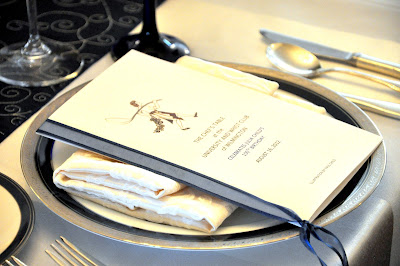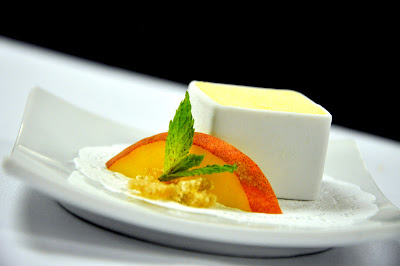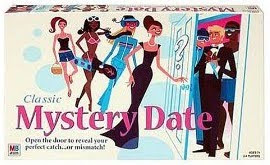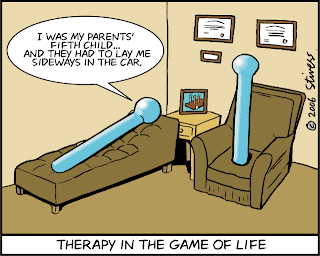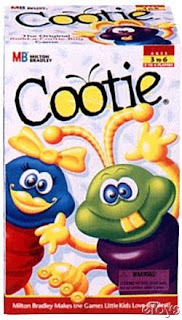Three years ago this week (8/27/09) I began ForknCork. With not much of an idea about what I would blog, I set forth and let the creative process develop. It's been a very rewarding experience, and one wholly self-indulgent. Rather than reflect on posts of the last three years, I decided that in observance of tomorrow's Blue Moon, I would re-post my Blue Moon post from October, 2010. It's a tribute to really rare wines, delicious food and very good friends. That pretty much sums up, for me, what ForknCork has been about. Enjoy.
A "blue moon" is one of those over-used superlatives indicating something so rare and so fancy-pants that everyone should take note. I admit it's both fun, but trite to use, but then my friends and I didn't really consider that when we dubbed what we thought was a once in a lifetime opportunity to taste uber-rare wines, while attempting to pair lofty cuisine worthy of their pedigree, would be the first of...more?
A "blue moon" is one of those over-used superlatives indicating something so rare and so fancy-pants that everyone should take note. I admit it's both fun, but trite to use, but then my friends and I didn't really consider that when we dubbed what we thought was a once in a lifetime opportunity to taste uber-rare wines, while attempting to pair lofty cuisine worthy of their pedigree, would be the first of...more?
While a true lunar blue moon occurs when there is a second full moon in a calendar month (that's about 7 times every 19 years), we truly thought our opportunity was more akin to the mythical type (you know- like almost never?) than the literal. Yet, math was on our side.
Last year, I blogged a dinner amongst these same friends that documented the very scenario above. Given the enormity of it's rareness, we thought we were not likely to see one again, any time soon. It featured some of the most precious and sought after wines in the world- including a 1975 Chateau d'Yquem, multiple first growth bordeaux, a 1963 Vintage Taylor Port and a 1919 Chateau Haut Brion, all provided by a passionate food and wine lover simply because he saw the enthusiasm with which we produced the first menu. It was, like the first time 10 years earlier, a night to remember.
Two months ago I got the call that our benefactor was coming back to town for business, and he wanted to do it all again, just 14 months later. As with the first two times, he chose 12 wines from his expansive and impressive cellar, emailed us the selections, and then shipped them overnight with painstaking care. Except this time, we had not six weeks to prepare a menu and line up our game plan, but three.
When faced with the prospect of pairing world-class wines from first-rate vintages, you don't think about busting out the molecular gastronomy and culinary bells and whistles. It's all about the classics. Example: a pairing from the first dinner 10 years earlier, which will forever be indelled in my memory, was as simple as it was brilliant. A 1962 Domaine de la Romanee-Conti "La Tache" was paired with a locally raised, braised rabbit leg with parsnips and local mushrooms. Simple. The rabbit was simmered until "confit tender".
It wasn't until days before our seafood purveyor, of all sources, queried whether we'd be interested in taking some fresh Maine wild blueberries that were being brought in by the same guys who were shipping day-boat halibut. The answer was a resounding, "DUH?". And so, to bridge that all important gap between what could be a white wine course or a red wine course, we added the berries to our braising juices and let them simmer. The result defines the term "sublime" (there was another impressive Burgundy paired with the dish from an equally impressive producer and vintage- but, the la Tache was so incredibly on point, and our elementary rabbit dish was so wonderfully complementary, that it silenced our group). Its extraordinary complexity and delicateness commanded a moment for us to regroup our thoughts before continuing. The perfect balance of components, married with a harmony of fruitiness, acidity and earthiness leaves me swooning to this day. Such is the power of the classics.
Sticking with that formula, a forward team that consisted of just myself and my surrogate "chef brother" Paul met one steamy, humid Sunday eve last month to handle the latest challenge. We gathered our notes on the latest round of wines, and, to lend some inspiration, we opened and reverently sipped a 1990 Chateau Latour. As is common, we aligned the wines in order of likely service and fleshed out an outline of the basics: main component and main flavor profile. With 12 wines slated for consumption, we decided to pour two per course, with the dinner lasting at least six courses (supplementary wines are often added by equally passionate attendees). But, we knew the crux of how it would all go down. We had only three days after that to consult a couple other possible chef friends who would participate to fine tune and finalize the menu, order our special ingredients and prep. All this while working our full-time jobs, managing our personal lives and performing our duties as Pere de la Maison. Challenging? Yes. Fun? Of course! Nerve racking? Well... you answer. The previous two dinners had consisted of no more than 10 attendees, and the most recent was looking more like 7 or 8. No matter, it like the others, had to be perfect.

Why does great wine command such respect and awe? Like architecture, it's man's greatest achievement of harnessing nature to produce a product solely for the purpose of his pleasure.
The menu was finalized and the pieces fit into place, as they so often do. Pairing food and wine is an art, yes- but, it also becomes an exercise in common sense. Delicate wines require delicate preparations, aggressive ones need a little push. Never repeat ingredients. Create diversity of textures and temperatures. Contrast and complement. Multiple courses should build in intensity then back down- begin gentle, finish gently. Leave the table sated, not stuffed.
Despite how it may read, the following menu and wines were the final choices, and they followed all the guidelines above. The pictures, of course, tell the real story.
Warm up: A little pre-game with Charles Gardet & Co.
1st Course
Ragout of Veal Sweetbreads “Blanquette”- with beech mushroom, local sweet corn, tarragon and veal jus (not pictured)
2000 Chevalier Montrachet~ Bouchard Pere et Fils
2000 Montrachet Marquis de la Guiche~ Joseph Drouhin
2nd Course
Braised Oxtail over quinoa and Doctor Martin lima beans - with thyme infused braising juices
1989 Chateau Mouton Rothschild~ Paulliac
1989 Chateau Lafite Rothschild~ Paulliac
 |
| A little "fuzzy", I know- but trust me. |
3rd Course
Crispy Colorado Lamb Rillettes – risotto style “potatoes” and hen of the woods mushrooms
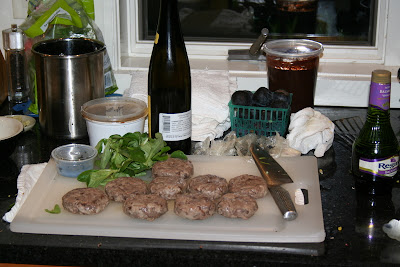 |
| (Rillettes in prep stage) |
1990 Chateau Latour~ Paulliac
1966 Chateau Gruaud Larose~ St. Julien (not pictured)
Fourth Course
Pink Peppercorn Crusted New Zealand Veal Rack - truffle scented heirloom eggplant and lingonberry demi glace
1995 Colgin~ Cabernet Sauvignon
2000 Inflagrante SQN~ Syrah
5th CourseCoconut Milk and Rum Braised Short Rib
With mole sauce and savory baked ricotta
 |
2006 Erna Schein “Fat Boy”
6th CourseRoasted Black Mission Fig – gorgonzola dolce, pulverized prosciutto, pistachio and honey
1971 Chateau d'Yquem~ Sauternes
7th CourseChocolate Espresso Pot d’crème with blackberry
1963 Graham's Vintage Porto
Chef Contributors:
Paul Bouchard, Matt Crist and Robert Lhulier
Wine Inspiration:
D. Paige and Ron Bouchard


















